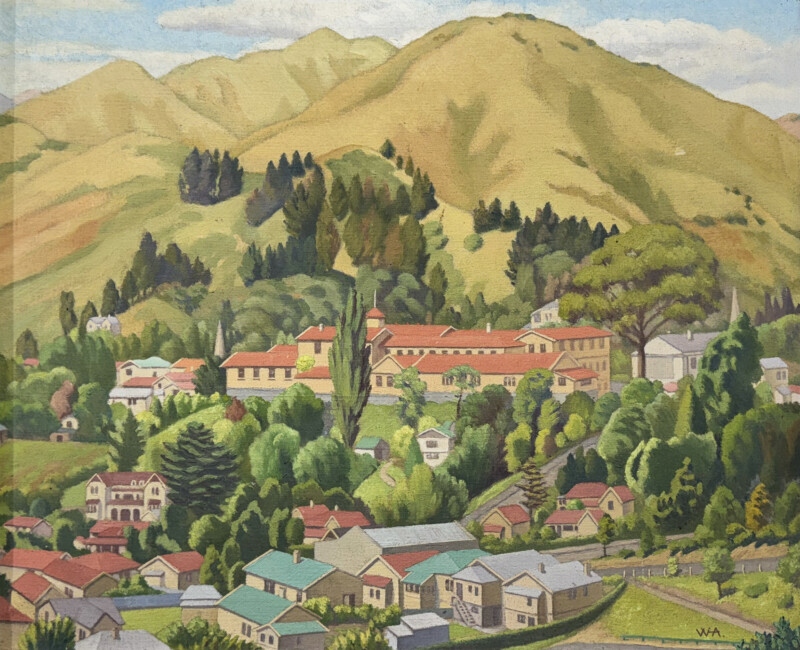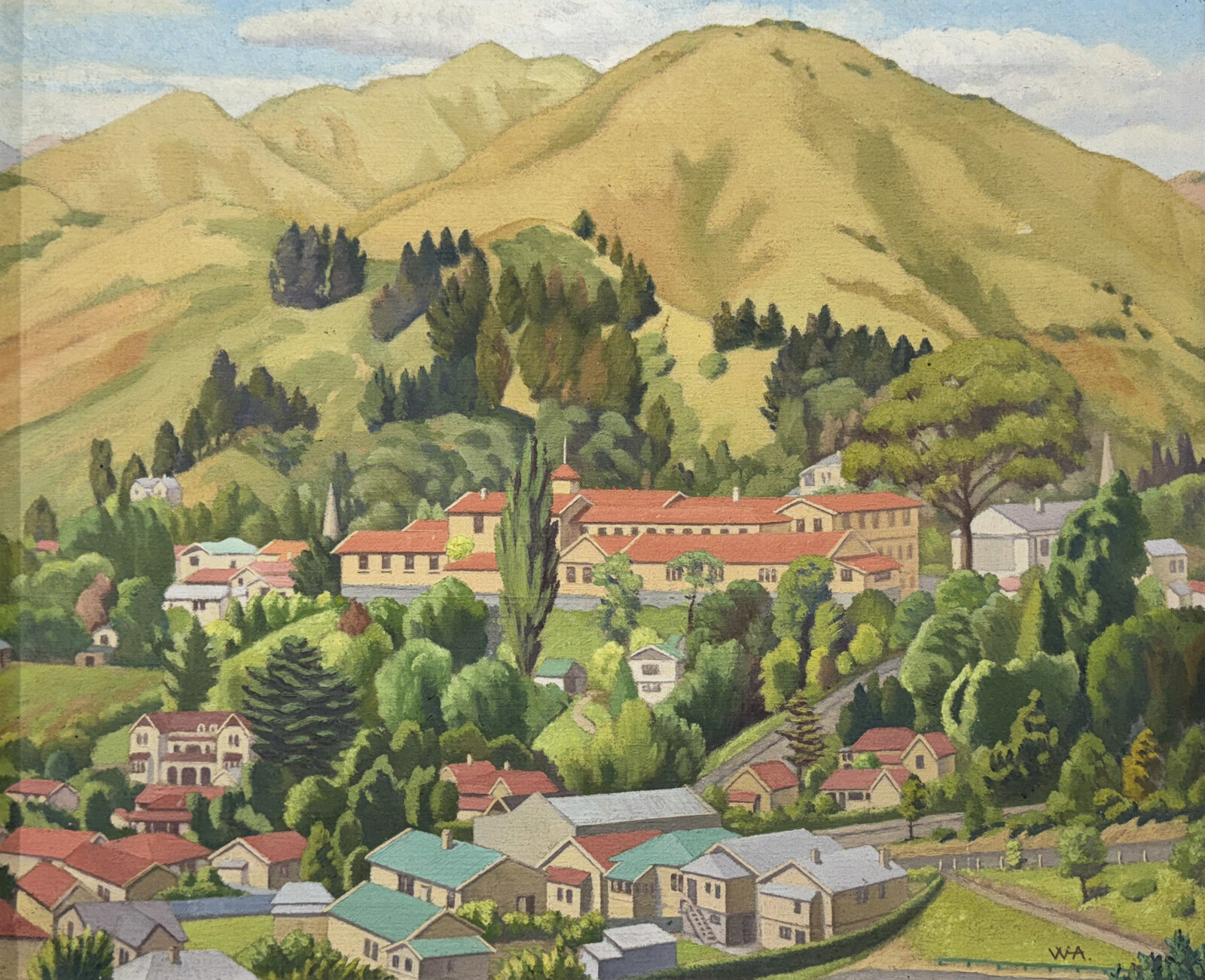ALLEN, William Henry;
Nelson Girls’ College
c.1937
Oil on canvas
500 x 600mm

William Henry Allen was born and trained in Britain, studying at the Royal College of Art in London from 1919 to 1923 (he is often credited as ‘A.R.C.A.’—an Associate of the Royal College of Art). He came to Aotearoa New Zealand in 1925, having been recruited by William Sanderson La Trobe, the nation’s Superintendent of Technical Education, as part of a programme of importing British talent to improve art education in New Zealand. Other artists who immigrated via the ‘La Trobe scheme’ included Jenny Campbell, Robert Nettleton Field, Roland Hipkins, Christopher Perkins, and Francis Aubrey Shurrock. Allen was especially close to Field, whom he had met in Britain, and Shurrock.
It is well known that the La Trobe artists as a group had a strong impact on the local art scene, but the individual artists tend not to be celebrated. Perkins is probably the most familiar, thanks in part to Hamish Keith and Gordon Brown, who made him a major feature of their canon-making publication An Introduction to New Zealand Painting, 1839–1967 (1969). The quality of ‘harsh light’ and associated crisp contours cited by Brown and Keith as a feature of Perkins’ work can be felt in Allen’s too. This was picked up by younger artists, particularly those associated with the so-called ‘regionalist’ movement, such as Rita Angus, Rata Lovell-Smith, and Bill Sutton.
There are points of commonality between Allen’s work and earlier pieces by Leo Bensemann and Doris Lusk. Allen, Bensemann, and Shurrock were all folk dancing enthusiasts, and a portrait of Bensemann by Allen is today in the collection of the Suter Art Gallery Te Aratoi o Whakatū (1282). By the time Lusk attended art school in Dunedin, Allen had left, but she likely met him in Whakatū Nelson, where he was appointed art master at Nelson College in 1933. From 1941 to 1946, when he and his family returned permanently to Britain, he was president of the Nelson Suter Art Society and a trustee of the Bishop Suter Art Gallery (now the Suter Art Gallery Te Aratoi o Whakatū).
Nelson Girls’ College, originally in the collection of the artist’s daughter, Sheila Allen, is an excellent example of precisely the sort of work that was influential on younger artists. It was most likely exhibited at the 49th Annual Exhibition of the New Zealand Academy of Fine Arts in 1937 (an oil titled Nelson Girls’ College appears in the catalogue, as No. 201). The bright, almost pastel, palette and clean contours of buildings and landscape alike are typical of Allen’s suave modernism. The work is almost illustrative, and attests to his interest in the full range of modes of artistic expression—not only painting and sculpture, but also architecture, design, and commercial art.
Allen not only taught and led by example, but also wrote. In a short but powerful article, ‘Impressions of New Zealand Art’, published in Art in New Zealand in 1929, Allen summed up the limitations of the local art world and pointed to changes that he wished to see. Some of the limitations he identified were the product of circumstance. He noted, for instance, that great artists often left the country, while great art was seldom brought in. Other issues could be changed: latent conservatism, a lack of experimentation, too much attention given to painting and sculpture, too little given to other creative forms. He concluded:
‘It is true that many people will always prefer the work and methods of the past to anything new, but the true artist, if he has anything vital to say, cannot be content to reiterate the statements of past masters. We should remember that the work of Rembrandt, or Whistler, was just as new and strange to their contemporaries as—let us say—the work of [Jacob] Epstein or Paul Nash is to many of us to-day [sic].’[1]
[1] W. H. Allen, ‘Impressions of New Zealand Art’, Art in New Zealand 4 (June 1929): 216.
Inscriptions
WHA [l.r.] Nelson Girls' College. [verso]Exhibition History
49th Annual Exhibition, New Zealand Academy of Fine Arts, Te Whanganui-a-Tara, 1937, cat. no. 201
Provenance
2024–
Fletcher Trust Collection, purchased from International Art Centre, Tāmaki Makaurau, 24 June 2024, lot 131
1988–2024
Collection and estate of Sheila Allen (1926–2018), the artist’s daughter
–1988
Collection of the artist

